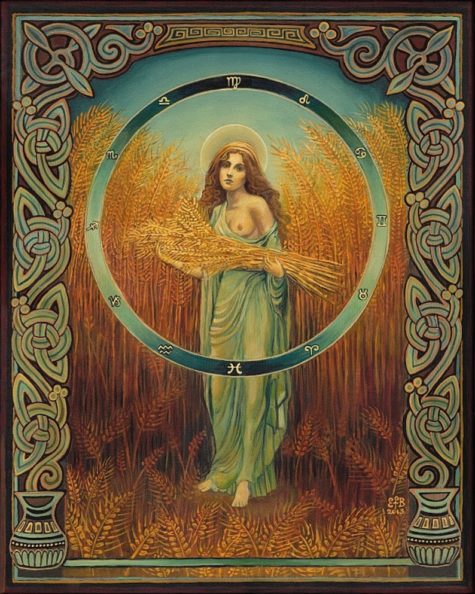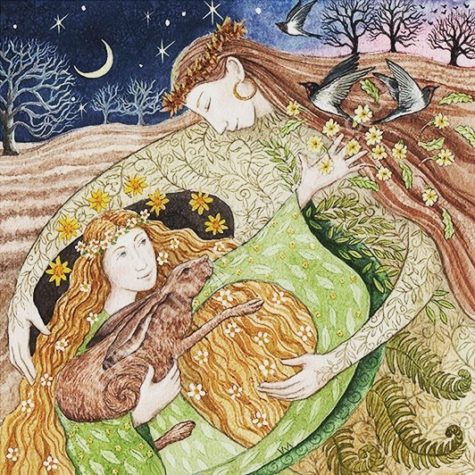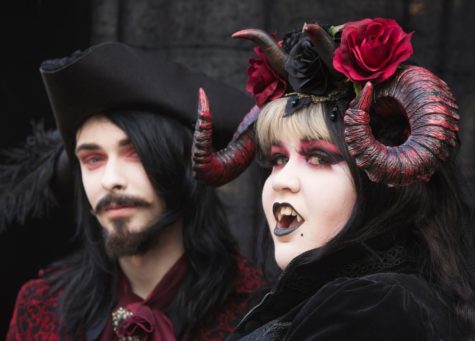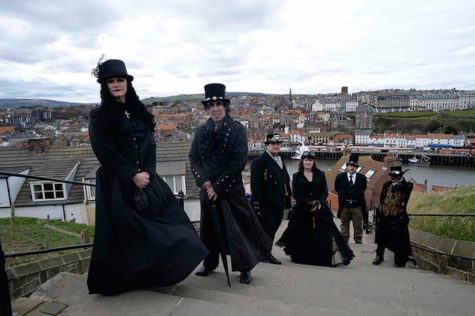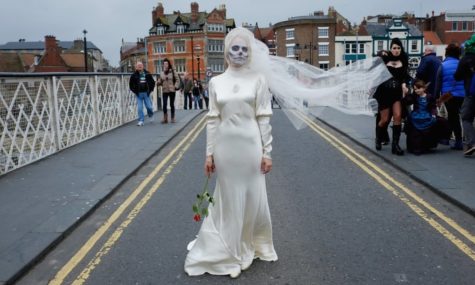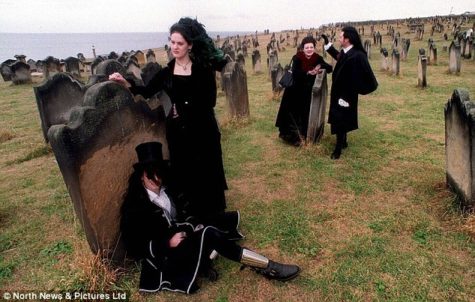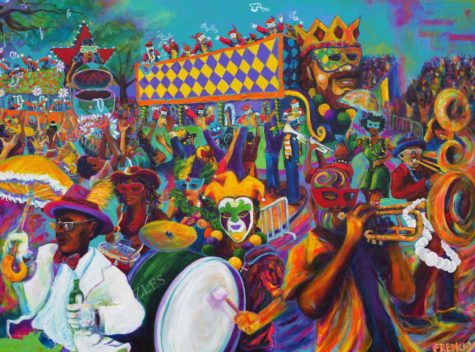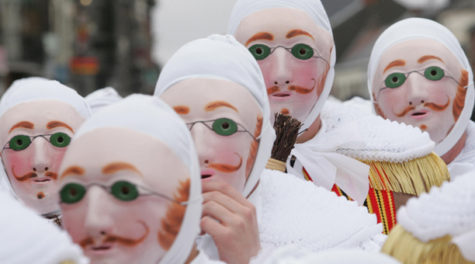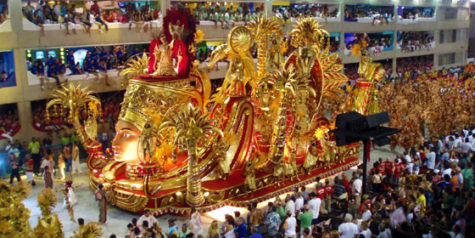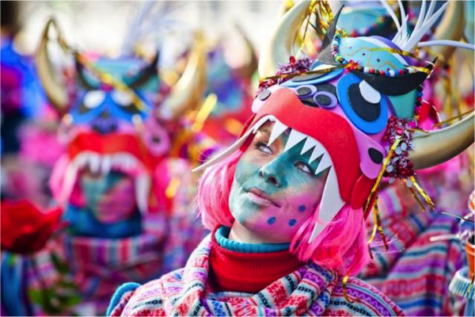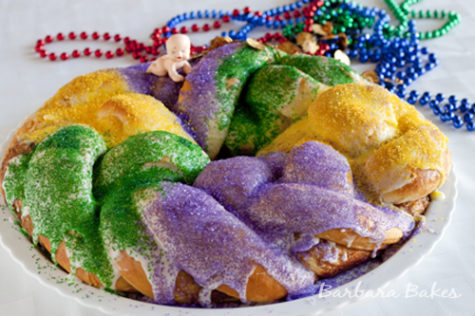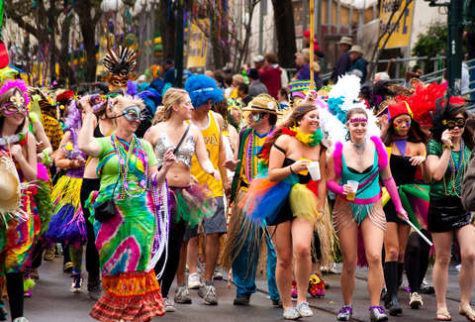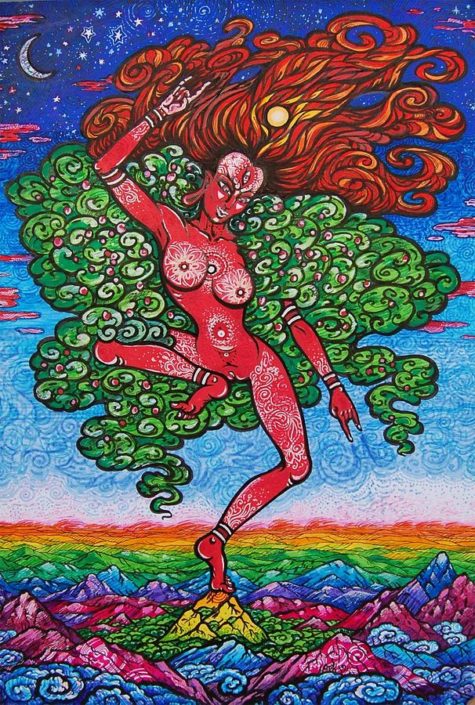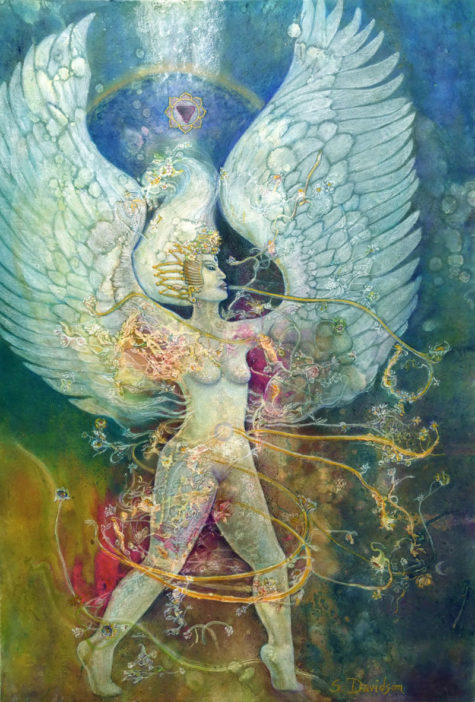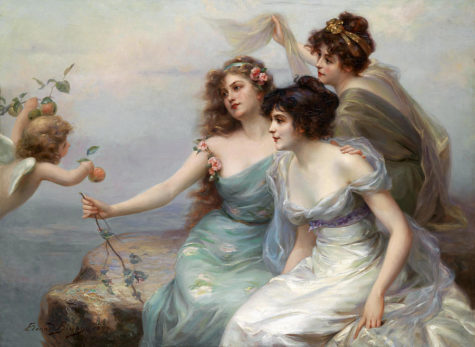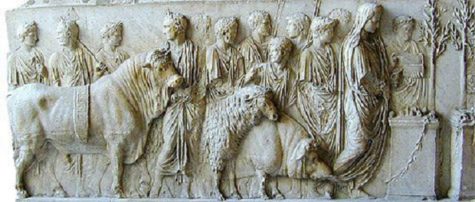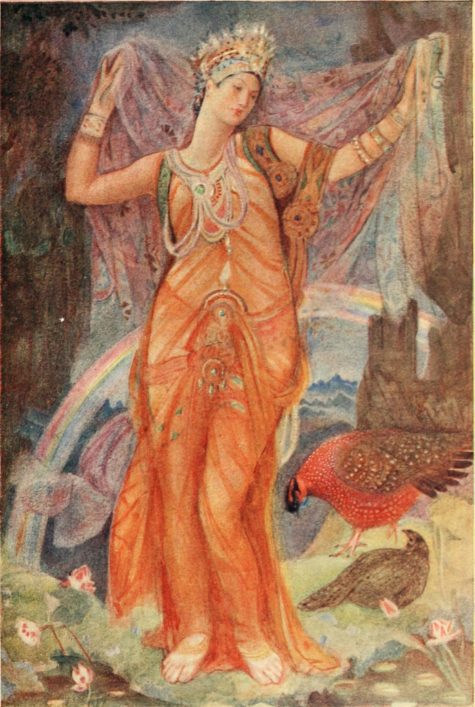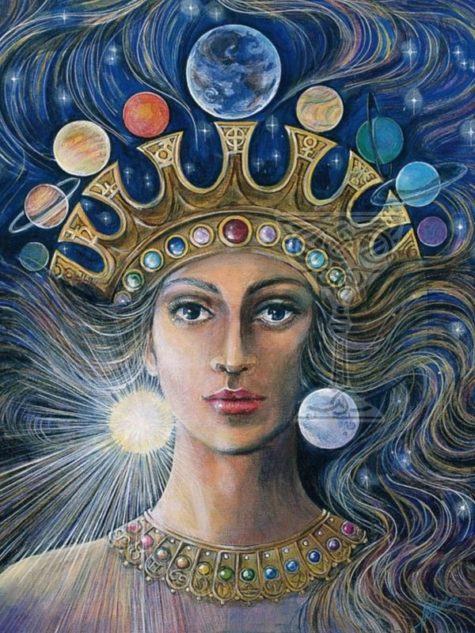April
National Look Up At The Sky Day is celebrated annually on April 14 (some calendars have it listed as April 12). On this day we all hope for good weather and look to the skies to reflect on the beauty above us.
There are many things that you can see as you sit back, relax and look up. The sky’s beautiful blue color, the clouds and their many shapes, the sun (maybe peeking through the clouds), and many different birds flying around. If it is nighttime, you may find the sky filled with stars and a beautiful moon.
It’s a busy time of the year. Spring is arriving, people are upping their workout regimes in order to get ready for summer, the newness of the new year has worn off and we are all buckling in, and in the US it’s tax season. This is a perfect day to stop and look up at the sky. Take a moment and enjoy your surroundings and just breathe.
The creators of this holiday remain anonymous, but their goal is very clear: to encourage people to take a little time to slow down and appreciate the little things in life. People who spent a lot of their time looking at the sky include Nicholas Copernicus, who proved the earth revolved around the Sun (and not the other way around as previously thought) Albert Einstein, the creator of the Theory of Relativity, and Leonardo da Vinci, who envisioned the first flying machines, so rest assured you will be in the best of company!
How to Celebrate Look Up at the Sky Day
As the name of this little holiday itself suggests, take some time to look up at the sky! We sometimes take natural beauty for granted, and only pay attention to the sky if, say, it happens to be raining and we want to complain. So take a blanket out to the park and just lay down on it and gaze upwards for a while—you’re likely to be amazed at how it changes depending on wind and other factors.
Watching birds go abut their lives as if nothing of importance was going on down below at all will likely be relaxing, and watching planes soaring high above you may even motivate you to take a trip to some faraway land. Look Up at the Sky Day was created to motivate us to see the world from a different perspective than we usually do and appreciate the beauty of nature, so make sure you get out and celebrate and make your life just a little bit more meaningful!
Sources:
Today (April 12) is the first day of the Ludi Cereales, another spring vegetation festival, this one in honor of the goddess Ceres, goddess of grains and cereal crops. It lasts for eight days, and like the Megalesia before it, the Cerealia culminates on its final day.
During Roman times, one of the symbolic rituals of the final day was the release of foxes into the Circus with flaming brands attached to their tails despite the fact that Ceres is notoriously a peaceful goddess and most often accepts offerings of spelt cakes and salt, as well as incense.
In the countryside, people offer milk, honey, and wine on the Cerealia (particularly the final day), after bearing them thrice around the fields.
More About This Festival
Ceres is the Goddess of agriculture, and was credited with the discovery of spelt wheat, the yoking of oxen and ploughing, the sowing, protection and nourishing of the young seed, and the gift of agriculture to humankind; before this, it was said, man had subsisted on acorns, and wandered without settlement or laws. She was the first to “break open the earth”, and all activities of the agricultural cycle were protected by her laws. She held the power to fertilize, multiply and fructify plant and animal seed, whose offspring were the physical incarnations of her power.
Her first plough-furrow opened the earth (Tellus’ realm) to the world of men and created the first field and its boundary; she thus determined the course of settled, lawful, civilized life. She mediated between plebeian and patrician factions. She oversaw the transition of women from girlhood to womanhood, from unmarried to married life and motherhood and the growth of children from infancy. Despite her chthonic connections to Tellus, she was not, according to Spaeth, an underworld deity. Rather, she maintained the boundaries between the realms of the living and the dead.
Given the appropriate rites, she would help the deceased into afterlife as an underworld shade (Di Manes): otherwise, the spirit of the deceased might remain among the living as a wandering, vengeful ghost.
The goddess was worshiped in many ways. There was the porca praecidanea, which involved sacrificing a fertile female pig and was necessary before a harvest. Cato indicates that sacrifices of any large food item will do, however, and suggests a pumpkin as an acceptable substitute for a pig, since it can be cut open and the seeds offered to Ceres in much the same way the entrails of the pig would be. After the offering of the porca praecidanea, it was customary to also give the goddess a libation of wine.
The poor could offer wheat, flowers, and a libation. The expectations of afterlife for initiates in the sacra Cereris may have been somewhat different, as they were offered “a method of living” and of “dying with better hope”.
Ceres’ major festival was the Cerealia – the ludi cereales, culminating on April 19 to celebrate the growth of grain and other agricultural products. Its original form is unknown; it may have been founded during the regal era. During the Republican era, it was organised by the plebeian aediles, and included ludi circenses (circus games). These opened with a horse race in the Circus Maximus, whose starting point lay just below the Aventine Temple of Ceres, Liber and Libera. In a nighttime ritual after the race, blazing torches were tied to the tails of live foxes, who were released into the Circus. The origin and purpose of this ritual are unknown; it may have been intended to cleanse the growing crops and protect them from disease and vermin, or to add warmth and vitality to their growth
Religiously, the purpose of the races and the games were to make the goddess favorably disposed toward the Roman people, so that she would give them a good harvest.
Visual depictions of Ceres were largely derived from Greek portrayals of Demeter. On two coin types, a bust of Ceres was pictured on one side, while a yoke of oxen was on the other. On other coins, she wears a crown of grain stalks called a corona spicea, holds stalks of wheat, and is occasionally pictured with wheat and barley grains. One coin actually portrayed her wearing a modius, an instrument used to measure grain, on her head. Another pictures a bust of series on one side, and a pair of seated male figures with a wheat stalk to their side on the other. The seated men represent the official distribution of grain to the people. Annona, the goddess who personified the wheat supply, appears alongside Ceres on several coins from the imperial period. Reliefs from the Augustan period have even gone so far as to depict her as a plant growing out of the ground. In one her bust emerges from the earth, holding bunches of poppies and grain in her upraised hands while two snakes twine about her arms.
Ceres also assimilated the visual symbols of the Eleusinian Mysteries, which most Romans observed in her name. Ceres is depicted with symbols of the Mysteries, such as riding in a chariot drawn by snakes while holding a torch in her right hand.
Persephone’s Return ~ A Ritual For The Cerelea
Most often celebrated on the last day of the Ludi Cereales (or April 19).
- Color: Green
- Element: Earth
- Offering: Flowers. Begin something new.
- Daily Meal: Dark, coarse bread. Root vegetables. Poppy seeds. Millet. Nuts and seeds.
Altar: Upon a green cloth set as many spring flowers as possible, a bowl of earth saved from the day of Persephone’s descent, and the figure of a girl’s head emerging from the earth.
Invocation to Persephone’s Return
Let the Earth take joy!
Demeter’s heart is warmed,
For her beloved daughter,
The maiden of Spring,
Has returned to the upper world!
Let all upon the Earth take joy!
Flowers spring from her footsteps,
Grass spreads between her toes,
The promise of the summer wind
Falls like butterflies newly loosed
From her hair the color of poppies and clay.
Let us all take joy!
She who descended in the autumn,
She who is married to Death
And yet arises in the bringing of Life,
She who has passed the bodies
Of a thousand corpses,
She who has sung with the shades
Of a thousand ancestors,
She rises to greet the morning sun
For as long as it is her time.
Then, like all things, she will descend again,
Into the depths of the Earth,
And we, we shall learn to love that cycle
Of rising and falling, of birth and death,
And truly call it a blessing.
Chant:
Kore Kore Kore Proserpina
Let one chosen for the work of the daily ritual carry the bowl of earth from person to person about the hall, and let each one take a bit of the earth and rub it on their faces, and let it remain until the evening ablutions.
~Info collected from various sources, including the Pagan Book of Hours
Whitby Goth Weekend is an alternative music festival held in Whitby. The event consists of two nights of live bands at the town’s largest venue, The Spa Pavilion, and three days of alternative trade stalls at the Spa Pavilion, Whitby Leisure Centre, and Whitby Brunswick Centre.
Dates for 2019 are as follows:
- 12-14 April
- 25-27 October
The festival was held yearly until 1997, when it became twice-yearly in April and October. It has grown into one of the world’s most popular goth music events attracting around 1,500+ attendees from across the UK and beyond. The term “Whitby Goth Weekend” is sometimes used as a generic term to describe events during the week in Whitby as a whole, although the name of the event and its associated logo are registered trademarks of Jo Hampshire of Top Mum Promotions.
The main event is held in the town’s largest venue Whitby Spa Pavilion (known as the Spa) and the Bizarre Bazaar ‘Goth Market’ is also held there and at Whitby Leisure Centre and the Brunswick Centre. Access to the Spa in the evening requires a ticket and live bands play on both Friday and Saturday from 08:00 until about midnight.
The “weekend” starts during the day on Friday and fringe events are held on Thursday, Sunday and Monday including club nights, markets, and a charity football match between visiting goth team Real Gothic, and local team Stokoemotiv Whitby.
During the October/November event there is an independent custom car show, ‘Whitby Kustom’ in the grounds of West Cliff School. There are also several “meet ups” aimed at goths with a particular interest, e.g. Lolita Goth.
Newbies who have not attended the event before are referred to as “Whitby Virgins”. To help introduce them to the event, there was a WGW Virgins Meet Up on the Friday morning at the Spa until about 2014.
In the mid-2000s the October weekend on or near Halloween began to attract large numbers of non-goths in Halloween, horror, historical, fantasy and sci-fi costume, which has led to an increase in photographers and visitors. The weekend now attracts other alternative subcultures, including Victorian vampires, rockers, punks and members of the steampunk subgenre.
Some regulars consider it no longer a purely “Goth” weekend, and it was acknowledged by Hampshire in the 2014 Whitby Goth Weekend Guide that in order to survive the event would have to diversify into other areas that have influenced Goth.
Concerns have grown about disrespect being shown to the graves in St. Mary’s Churchyard by photographers using them for photographic purposes which has resulted in a petition to have the area closed during the event, an action that Whitby Goth Weekend fully supports. The Bram Stoker Film Festival, which also took place in the town, rehashed a proposal to build a film set graveyard which photographers would be charged to use.
Sources:
According to astrological and lunar lore, there are best days for doing a variety of tasks. The best days listed here are based on both the phase of the moon and its position in the zodiac. Many people believe that if you do the tasks on the dates listed, you will get the best results possible.
April 1:
- Brew
- Can Fruits and Vegetables
- Castrate Farm Animals
- Get Married
- Mow Grass (to slow growth)
- Plant Root Crops
- Potty Train a Child
- Transplant (seedlings and plants)
- Wean a Baby or an Animal
April 2:
- Brew
- Can Fruits and Vegetables
- Castrate Farm Animals
- Get Married
- Mow Grass (to slow growth)
- Plant Root Crops
- Potty Train a Child
- Transplant (seedlings and plants)
- Wean a Baby or an Animal
April 3:
- Cut Hair (to slow growth)
- Demolition
- Harvest
- Kill Plant Pests
- Mow Grass (to slow growth)
- Pick Apples and Pears
- Quit Smoking
- Start Diet (to lose weight)
- Wash Wooden Floors
April 4:
- Cut Hair (to slow growth)
- Demolition
- Harvest
- Kill Plant Pests
- Mow Grass (to slow growth)
- Pick Apples and Pears
- Quit Smoking
- Start Diet (to lose weight)
- Wash Wooden Floors
April 5:
- Bake
- Cut Firewood
- Dig Holes
- Kill Plant Pests
- Mow Grass (to increase growth)
April 6:
- Advertise Something for Sale
- Buy a Home
- Cut Firewood
- Cut Hair (to increase growth)
- Dig Holes
- Get Married
- Mow Grass (to increase growth)
- Paint
- Plant Above Ground Crops
- Wax Floors
April 7:
- Advertise Something for Sale
- Buy a Home
- Cut Firewood
- Cut Hair (to increase growth)
- Dig Holes
- Get Married
- Mow Grass (to increase growth)
- Paint
- Plant Above Ground Crops
April 8:
- Cut Firewood
- Dig Holes
- Kill Plant Pests
- Mow Grass (to increase growth)
- Travel (for pleasure)
April 9:
- Cut Firewood
- Dig Holes
- Kill Plant Pests
- Mow Grass (to increase growth)
- Travel (for pleasure)
April 10:
- Bake
- Buy a Home
- Cut Firewood
- Cut Hair (to increase growth)
- Dig Holes
- Get Married
- Mow Grass (to increase growth)
- Plant Above Ground Crops
- Plant Flowers
- Plant Seed Beds
- Start Diet (to gain weight)
- Wax Floors
April 11:
- Bake
- Buy a Home
- Cut Firewood
- Cut Hair (to increase growth)
- Dig Holes
- Get Married
- Mow Grass (to increase growth)
- Plant Above Ground Crops
- Plant Flowers
- Plant Seed Beds
- Start Diet (to gain weight)
- Wax Floors
April 12:
- Bake
- Cut Firewood
- Cut Hair (to increase growth)
- Dig Holes
- Get Married
- Mow Grass (to increase growth)
- Plant Above Ground Crops
- Plant Flowers
- Plant Seed Beds
- Start Diet (to gain weight)
April 13:
- Cut Firewood
- Dig Holes
- Get Married
- Kill Plant Pests
- Mow Grass (to increase growth)
- Paint
- Travel (for pleasure)
- Wax Floors
April 14:
- Cut Firewood
- Dig Holes
- Get Married
- Kill Plant Pests
- Mow Grass (to increase growth)
- Paint
- Travel (for pleasure)
April 15:
- Cut Firewood
- Dig Holes
- Kill Plant Pests
- Mow Grass (to increase growth)
- Wax Floors
April 16:
- Cut Firewood
- Dig Holes
- Kill Plant Pests
- Mow Grass (to increase growth)
April 17:
- Bake
- Cut Firewood
- Dig Holes
- Get Married
- Mow Grass (to increase growth)
- Plant Above Ground Crops
- Plant Flowers
April 18:
- Bake
- Cut Firewood
- Dig Holes
- Get Married
- Mow Grass (to increase growth)
- Plant Above Ground Crops
- Plant Flowers
- Set Eggs:
- Wax Floors
April 19:
- Can Fruits and Vegetables
- Hunting
- Make Jams and Jellies
- Mow Grass (to slow growth)
- Plant Root Crops
- Plant Seed Beds
- Prune Trees
- Set Eggs:
- Slaughter
- Transplant (seedlings and plants)
- Wax Floors
April 20:
- Can Fruits and Vegetables
- Hunting
- Make Jams and Jellies
- Mow Grass (to slow growth)
- Plant Root Crops
- Plant Seed Beds
- Prune Trees
- Slaughter
- Transplant (seedlings and plants)
April 21:
- Advertise Something for Sale
- Castrate Farm Animals
- Cut Hair (to slow growth)
- Demolition
- Dry Fruits and Vegetables
- Kill Plant Pests
- Mow Grass (to slow growth)
- Pick Apples and Pears
- Potty Train a Child
- Quit Smoking
- Slaughter
- Start Diet (to lose weight)
- Wash Windows
- Wash Wooden Floors
- Wean a Baby or an Animal
April 22:
- Advertise Something for Sale
- Castrate Farm Animals
- Cut Hair (to slow growth)
- Demolition
- Dry Fruits and Vegetables
- Kill Plant Pests
- Mow Grass (to slow growth)
- Pick Apples and Pears
- Potty Train a Child
- Quit Smoking
- Start Diet (to lose weight)
- Wash Windows
- Wash Wooden Floors
- Wean a Baby or an Animal
April 23:
- Castrate Farm Animals
- Mow Grass (to slow growth)
- Plant Root Crops
- Potty Train a Child
- Prune Trees
- Wean a Baby or an Animal
April 24:
- Castrate Farm Animals
- Mow Grass (to slow growth)
- Plant Root Crops
- Potty Train a Child
- Prune Trees
- Wean a Baby or an Animal
April 25:
- Castrate Farm Animals
- Mow Grass (to slow growth)
- Plant Root Crops
- Potty Train a Child
- Prune Trees
- Wean a Baby or an Animal
April 26:
- Castrate Farm Animals
- Cut Hair (to slow growth)
- Dig Post Holes
- Harvest
- Kill Plant Pests
- Make Jams and Jellies
- Mow Grass (to slow growth)
- Paint
- Potty Train a Child
- Quit Smoking
- Set Eggs
- Start Diet (to lose weight)
- Wash Wooden Floors
- Wean a Baby or an Animal
April 27:
- Castrate Farm Animals
- Cut Hair (to slow growth)
- Dig Post Holes
- Harvest
- Kill Plant Pests
- Make Jams and Jellies
- Mow Grass (to slow growth)
- Paint
- Potty Train a Child
- Quit Smoking
- Start Diet (to lose weight)
- Wash Wooden Floors
- Wean a Baby or an Animal
April 28:
- Brew
- Can Fruits and Vegetables
- Castrate Farm Animals
- Mow Grass (to slow growth) 0
- Plant Root Crops
- Potty Train a Child
- Transplant (seedlings and plants)
- Wean a Baby or an Animal
April 29:
- Brew
- Can Fruits and Vegetables
- Castrate Farm Animals
- Mow Grass (to slow growth)
- Plant Root Crops
- Potty Train a Child
- Transplant (seedlings and plants)
- Wean a Baby or an Animal
April 30:
- Brew
- Can Fruits and Vegetables
- Castrate Farm Animals
- Mow Grass (to slow growth)
- Plant Root Crops
- Potty Train a Child
- Transplant (seedlings and plants)
- Wean a Baby or an Animal
Source: The Farmer’s Almanac
Mardi Gras is a carnival celebration that begins on Twelfth Night (the Feast of Epiphany) on January 6th and culminates on the Tuesday before Lent. The best known Mardi Gras is in New Orleans, Louisiana where it is a legal holiday.
Mardi Gras is French for Fat Tuesday, the Tuesday before Ash Wednesday. The biggest events happens on this day. The name Fat Tuesday comes from an old custom of parading a fat ox through the streets of Paris on Shrove Tuesday. The term Fat Tuesday also reflects the practice of the last night of eating rich, fatty foods before the ritual fasting of the Lenten season.
Related popular practices are associated with Shrovetide celebrations before the fasting and religious obligations associated with the penitential season of Lent. In countries such as the United Kingdom, Mardi Gras is also known as Shrove Tuesday, which is derived from the word shrive, meaning “to administer the sacrament of confession to; to absolve”
Mardi Gras traditions are rooted in Ancient Greek and Roman customs. Carnival in Rome became popular around the middle of the second century as a way to feast and act wild before the somber days of Lent. They wore costumes and masks. They celebrated Bacchus and Venus and all things glutinous and pleasurable. The Bacchus parade is still held during Mardi Gras in New Orleans.
Mardi Gras in the United States
It’s believed the first American Mardi Gras took place on March 3, 1699, when the French explorers Iberville and Bienville landed in what is now Louisiana. They held a small celebration. Each year, it got bigger with street parties, masked balls, and extravagant dinners. However, when the Spanish took over, the celebrations were banned until Louisiana became a U.S. state in 1812.
On Mardi Gras in 1827, a group of students wearing bright costumes danced through the streets of New Orleans, emulating the revelry they’d observed in Paris. Ten years later, the first recorded New Orleans Mardi Gras parade took place.
In 1872, the official Mardi Gras colors were established as purple, green, and yellow when the Russian Grand Duke Alexis Romanoff came to New Orleans during carnival in pursuit of actress Lydia Thompson. These were the colors of the Romanoff house. Purple stands for justice, green for faith, and yellow for power.
Carnival organizations are called Krewes. The first krewe was the “Mystick Krewe of Comus”, which began in 1857. The second oldest krewe is the “Krewe of Rex”, which started up in 1872. Balls and galas of elaborate and enormous proportion are held every year, but only members of the Kewes may attend.
Mardi Gras parades fill the streets. Beads, coins, balls, cups, and other trinkets are thrown to the crowds. In 1872, the Krewe of Rex, staged a daytime parade in the archduke’s honor. This parade is still held and is the largest of all the parades.
In 1916, Zulu began to parade featuring characters such as King Zulu, Big Shot, and the Witch Doctor. While Rex rules Mardi Gras with a golden scepter and jeweled crown, King Zulu carries a banana stalk and wears a lard can on his head.
Alabama and Mississippi also have Mardi Gras celebrations.
Mardi Gras in Belgium
In the Belgian city of Binche, the Mardi Gras festival is one of the most important days of the year and the summit of the Carnival of Binche. Around 1000 Gilles dance throughout the city from morning until past dusk, while traditional carnival songs play. In 2003, the “Carnival of Binche” was proclaimed one of the Masterpieces of the Oral and Intangible Heritage of Humanity by UNESCO.
Another noteworthy celebration in Belgium is Aalst Carnaval. Mardi Gras is considered the day of the “Voil Janet” or “Dirty Sissy”. Traditionally in Aalst, men dress as their wives or mothers. This custom called “Voil Janet” goes back to the time when Aalst was an industrial time and workers did not have the money to buy dresses. On Mardi Grass the “Voil Janet” gets a parade dedicated to it. Men and woman dressed traditionally get to walk along in the parade, and interact with the viewers.
The word “Voil” in the local dialect, means dirty (= Dutch “vuil”, cognate with English “foul”). For this reason, the parade is sometimes claimed obnoxious, dirty and flat out obscene. Though the parade has mellowed down over the years due to restrictions implemented by the town.
Later that day people gather around an effigy that is lit. This event is paired with a lot of music, emotions and fraternity. The event is known for the fact that almost every person in the crowd starts crying. After that, there is one last night of celebration.
Mardi Gras Around The World
- Brazil
Carnival is the most famous Brazilian holiday. During this time, Brazil attracts 70% of its tourists. Variations in carnival celebrations are observed throughout the multitude of Brazilian cities. Commonality observed among them is the incorporation of samba into the celebrations.
The southeastern cities of Brazil have massive parades that take place in large sambadromes. The Rio Carnival is where two million people celebrate in the city. The city of Salvador holds a very large carnival celebration where millions of people celebrate the party in the streets of the city with a very big diversity of musical styles together.
- Cayman Islands
The Cayman Islands Mardi Gras hosts a popular Monday Food Festival prior to the Fat Tuesday Festivities. Ash Wednesday being a holiday has a daytime party in George Town which coincides with the annual Agriculture Fair which is attended by thousands of residents.
- Colombia
Carnaval de Barranquilla is Colombia’s Mardi Gras celebration. In 2003, it was proclaimed as one of the Masterpieces of the Oral and Intangible Heritage of Humanity by UNESCO.
- Czech Republic
In the Czech Republic it is a folk tradition to celebrate Mardi Gras, which is called Masopust (meat-fast i.e. beginning of fast there). There are celebration in many places including Prague but the tradition also prevails in the villages such as Staré Hamry, whose the door-to-door processions there made it to the UNESCO World Intangible Cultural Heritage List.
- France
Carnival parades take place in many cities such as Nice, Alpes Maritimes, Dunkerque, Granville, Sarreguemines as well as in the French Caribbean islands Guadeloupe and Martinique.
The Nice Carnival is held annually in Nice on the French Riviera. The earliest records establish its existence in 1294 when the Count of Provence, Charles Anjou, wrote that he had passed “the joyous days of carnival.” This may make the Nice Carnival the original carnival celebration. Today the event attracts over a million visitors to Nice every year over a two-week period.
- Germany
The celebration on the same day in Germany knows many different terms, such as Schmutziger Donnerstag or Fetter Donnerstag (Fat Thursday), Unsinniger Donnerstag, Weiberfastnacht, Greesentag and others, and are often only one part of the whole carnival events during one or even two weeks before Ash Wednesday be called Karneval, Fasching, or Fastnacht among others, depending on the region.
In standard German, schmutzig means “dirty”, but in the Alemannic dialects schmotzig means “lard” (Schmalz), or “fat”; “Greasy Thursday”, as remaining winter stores of lard and butter used to be consumed at that time, before the fasting began. Fastnacht means “Eve of the Fast”, but all three terms cover the whole carnival season. The traditional start of the carnival season is on 11 November at 11:11 am (11/11 11:11).
- Italy
In Italy Mardi Gras is called Martedì Grasso (Fat Tuesday). It’s the main day of Carnival along with the Thursday before, called Giovedí Grasso (Fat Thursday), which ratifies the start of the celebrations. The most famous Carnivals in Italy are in Venice, Viareggio and Ivrea. Ivrea has the characteristic “Battle of Oranges” that finds its roots in medieval times. The Italian version of the festival is spelled Carnevale.
- Netherlands
The Netherlands also has a festival similar to Mardi Gras. It’s called Carnaval and is similar to the Venice Carnival. The origin of the word Carnaval is carnem levare which means “to take away meat” in Latin, or carne vale, Latin for “farewell to meat”. It marks the beginning of Lent, leading up to Easter.
The carnival in the Netherlands is mainly held in the southern part of the Netherlands in the provinces of Noord-Brabant and Limburg, some parts of Zeeland and in eastern parts of Twente and Gelderland. As with many popular festivals, people tend to loosen some moral codes and become laid-back or loose, which is based in the ancient role-reversal origins of Carnaval, including dressing in costumes.
- Russia and Ukraine
Both Russia and Ukraine have the festival of Maslenitsa (Масленица, rus.), which on its pagan side celebrates the end of winter and the upcoming summer, and on its Christian side marks the last week before the Great Fasting period before Christian Easter.
The festival includes family gatherings with festive meals and treats of bliny (crepes) that resemble the round shape of sun, and culminates on the weekend with mass outdoors gatherings, festivities and entertaining activities such as pole climbing, where a wheel with variety of presents is affixed on the top of a long pole and the contestants need to reach the top to get them.
Also the festival’s mascot – a feminine figure made out of straw, which symbolizes winter, gets put on fire at the end of the celebration.
- Sweden
In Sweden the celebration is called Fettisdagen, when you eat fastlagsbulle, more commonly called Semla. The name comes from the words “fett” (fat) and “tisdag” (Tuesday). Originally, this was the only day one should eat fastlagsbullar.
Mardi Gras Foods
Pancakes are a traditional food. Pancakes and related fried breads or pastries made with sugar, fat, and eggs are also traditionally consumed at this time in many parts of Latin America and the Caribbean.
Food in New Orleans is incredible. A Mardi Gras specialty is King Cake. It is a circular sweet roll-like cake with a hidden treasure, a tradition that originated during medieval times. Originally a gold bean was baked inside but today, to avoid choking, a plastic baby is placed inside instead.
The Twelfth Night Revelers, a Mardi Gras krewe, use a King Cake to randomly select the queen for krewe. The one who finds the baby gets to be queen. At parties, offices, and causal gatherings the lucky person who finds the baby gets to bring a King Cake to the next occasion and/or be “king” for the day. Similar cakes and breads can be found in other cultures like Rosca De Reyes in Mexico.
Costumes
Mardi Gras, as a celebration of life before the more-somber occasion of Ash Wednesday, nearly always involves the use of masks and costumes by its participants. In New Orleans, for example, these often take the shape of fairies, animals, people from myths, or various Medieval costumes as well as clowns and Native Americans. However, many costumes today are simply elaborate creations of colored feathers and capes.
Unlike Halloween, Mardi Gras costumes are not usually associated with such things as zombies, mummies, bats, blood, and the like, though death may be a theme in some. The Venice tradition has brought golden masks into the usual round of costumes.
Going Topless
Women exposing their breasts during Mardi Gras in New Orleans, USA, has been documented since 1889, when the Times-Democrat decried the “degree of immodesty exhibited by nearly all female masqueraders seen on the streets.” The practice was mostly limited to tourists in the upper Bourbon Street area. In the crowded streets of the French Quarter, generally avoided by locals on Mardi Gras Day, flashers on balconies cause crowds to form on the streets.
In the last decades of the 20th century, the rise in producing commercial videotapes catering to voyeurs helped encourage a tradition of women baring their breasts in exchange for beads and trinkets. Social scientists studying “ritual disrobement” found, at Mardi Gras 1991, 1,200 instances of body-baring in exchange for beads or other favors.
Sources:
Dakini day, celebrated on the 25th day of each lunar month in Vajrayana Buddhist traditions, celebrates the feminine energy of wisdom. Devoted Buddhists will celebrate with a Tsok (Tsog), a feast including food, singing, a group (or single) sadhana full of sound and celebration. Most Tibetan Buddhist temples and meditation centers try to arrange a monthly Tsog on this day each month, with celebrants bringing food as offerings. It is always a happy day, that invites blessings not only for the attendees, but for all sentient beings.
This is one of the special days during a month, when Vajrayana practitioners perform a ritual of offering and purification of their commitments. It is believed that on this particular day, all the Dakinis gather in special sacred places and their energy is potently vivid and present at that moment.
When we perform practice on those auspicious days, we can connect with this potent energy and thus gain a lot of merit. It allows us to develop our practice and capacities, as well as purify our defilements and mistakes that we have accumulated with time. In this way, Dakini Day becomes very important for Vajrayana practitioners.
What is a Dakini?
The Dakini is a female being of generally volatile temperament, who acts as a muse for spiritual practice. Dakinis can be likened to elves, angels, or other such supernatural beings, and are symbolically representative of testing one’s awareness and adherence to Buddhist tantric sadhana.
Dakinis are portrayed as elusive, playful and often fierce and naked to symbolically convey how elusive true Wisdom encompassing “Emptiness” can be.
Without contradiction to their role as exemplars of Emptiness, Dakinis can also represent fierce activities, such as protection — the ferocious protective love of a mother.
Khandro Rinpoche defines the authentic Dakini principle as “a very sharp, brilliant wisdom mind that is uncompromising, honest, with a little bit of wrath.”
Dakinis appear in many forms. “The Dakinis are the most important elements of the enlightened feminine in Tibetan Buddhism,” says American teacher Tsultrim Allione. “They are the luminous, subtle, spiritual energy, the key, the gatekeeper, the guardian of the unconditioned state. If we are not willing to invite the Dakini into our life, then we cannot enter these subtle states of mind. Sometimes the Dakinis appear as messengers, sometimes as guides, and sometimes as protectors.”
Dakini are timeless, inorganic, immortal, non-human beings who have co-existed since the very beginning with the Spiritual Energy. In some New Age belief systems, they are angelic. This New Age paradigm differs from that of the Judeo-Christian by not insisting on angels being bona fide servants of God.
Moreover, an angel is the Western equivalent of a Dakini. The behavior of Dakini has always been revelatory and mysterious; they respond to the state of spiritual energy within individuals. Love is their usual domain – one explanation for Dakini or angels supposedly living in the sky or heaven. Manifestations of Dakini in human form occur because they supposedly can assume any form. Most often they appear as a human female. By convention, a male of this type is called a ‘Daka’.
In Buddhism, typically, the male Buddhas represent compassionate means, while the female Buddhas represent Wisdom. The symbols of bell and vajra (Ghanta and Dorje) represent female wisdom — the bell, which makes the sound of “Emptiness” — and the Vajra, representing compassionate means.
Dakini’s have always been a part of Buddhism, starting with the Jataka’s (stories of Buddha’s former lives) in which “divine beings are described as travelling through the air. In Sanskrit, such a being is called a Dakini, a term generally translated as “space-goer,” “celestial woman,” or “cloud fairy.”
Dakinis are typically thought of as the emanation of the “Enlightened Mind” understanding Emptiness. Another concept usually tied to Dakini practice is “bliss” — the state of blissful awareness of emptiness.
It is a wonderful experience to have a moment that realizes emptiness, a feeling of joy-bliss rather than “nothingness.” This is why Dakinis are often portrayed as active, dancing, joyful or fierce, naked and unencumbered.
Five Dakini Healing Mantra
The meaning of Dakini is the female enlightened energy and the awakened state of consciousness. Therefore, chanting this mantra increases and enhances all enlightened feminine energy.
Bam Ha Ri Ni Sa
The 5 Dakini also represents each of the 5 Elements:
- BAM ~ Buddha Dakini ~ (blue) ~ Mind energy, pacifies Ignorance
- HA ~ Vajra Dakini ~ (white) ~ Body energy, pacifies Anger
- RI ~ Ratna Dakini ~ (yellow) ~ Knowledge/Qualities/Healing, pacifies Ego/Pride
- NI ~ Padma Dakini ~ (red) ~ Speech energy, pacifies Desire
- SA ~ Karma Dakini ~ (green) ~ Action/Removes Obstacles, pacifies Jealousy
This mantra is helpful for all female related health issues, transforms negative emotions, unblocks channels, and balance 5 elements. When chanting this mantra on Dakini Day, the power magnifies ten-fold!
After chanting, blow into a glass of water, which infuses the healing vibration into the water, drink, and continue to enjoy its healing properties.
Sources:
There is not a lot of information about this particular feast day and the dates given for it vary widely. Our calendar lists it as January 30 – 31, but some calendars assign it to January 17 – 18, others say April 18 – 19, May 26, July 9 – 10, or October 13. None of these calendars have any information other than that it is called “Feast of Charities” for the Greek goddesses known as the Graces. I don’t think anyone really knows much about it.
I did find a Feast of the Charities Ritual at Llewellyn. Here it is:
- Color of the day: Orange
- Incense of the day: Sage
Today is the Feast of the Charities. These old Greek goddesses of beneficence were known to the Romans as the Gratiae, or “Graces.” They are Aglaea, whose name means “splendor,” Euphrosyne, or “joy,” and Thalia, or “mirth.” The Charities bestow charm, beauty, and creativity on their worshipers. In this regard they serve a similar purpose to the nine Muses. Generosity and festive activities please these goddesses.
- Get some friends together and dress up.
- Arrange each other’s hair.
- Dance and sing, or perform some sacred theater.
- Visit an art gallery or walk through a street fair.
Alternatively, do something nice for the less fortunate. Bundle up old clothes you never wear anymore to recycle for the less fortunate, or hold a food drive and donate the results to a local charity. (Yes, the term comes from the name of these goddess, “Charities.”) You could also donate your money or time. Give of yourself, and you shall receive “grace” from the Charities in return. Be kind and giving, and your creativity will overflow!
Belenus, whose name means “Bright One,” was one of the most ancient of Celtic gods. The Celtic fire festival, held on the eve of the first of May, known as Beltane, (the fires of Bel) is probably derived from the name of this deity. Beltane fires were lit to encourage the sun’s warmth. These fires also had restorative properties and cattle were herded between them before being loosed on the new spring pastures.
Closely connected to the Druids, ruler of science, healing, hot springs, fire, success, prosperity, purification, crops, vegetation, fertility. It is likely that Belenus (Bel, or Beli) was a fire deity, a patron of flame and the sun’s restorative powers (which explains his classical association with Apollo). Originally he may have been a pastoral deity and in Cymric myth is associated with cattle, sheep and crops. Though this may be because Beltane was the time that herds were moved to the high pastures.
The Celtic god of light and healing, “Bel” means “shining one,” or in Irish Gaelic, the name “bile” translates to “sacred tree.” It is thought that the waters of Danu, the Irish All-Mother goddess, fed the oak and produced their son, The Dagda. As the Welsh Beli, he is the father of Arianrhod by Don.
Patron of sheep and cattle, Bel’s festival is Beltane, one of two main Celtic fire festivals. Beltane celebrates the return of life and fertility to the world — marking the beginning of Summer and the growing season.
Taking place on April 30 (May Eve) and in some areas on May 1, Beltane also is sometimes referred to as “Cetsamhain” which means “opposite Samhain.” The word “Beltaine” literally means “bright” or “brilliant fire,” and refers to the bonfire lit by a presiding Druid in honor of Bile.
Found at: Encyclopedia Mythica
The festival of the Robigalia is celebrated to appease the God Robigus (or perhaps the Goddess Robigo; the gender of this deity, who originated as one of the numinae, is uncertain), who is the deity of wheat-rust, mildew, and blight.
It is an ancient festival of the agricultural calendar, and is celebrated by the Flamen Quirinalis. Both a red dog and sheep are sacrificed to Robigus, along with wine and incense; prayers are then spoken to protect the crops. There is some connection with the ascension of the star Sirius, but it is unclear.
Games (ludi) in the form of “major and minor” races were held. The Robigalia was one of several agricultural festivals in April to celebrate and vitalize the growing season, but the darker sacrificial elements of these occasions are also fraught with anxiety about crop failure and the dependence on divine favor to avert it.
Verminus, a God who protects cattle against worm disease, might also be honored on this day.
The Robigalia has been connected to the Christian feast of Rogation, which was concerned with purifying and blessing the parish and fields and which took the place of the Robigalia on April 25 of the Christian calendar.
Sources:
- Themes: Love; Fertility; Passion; Sexuality; Moon
- Symbols: Star; Moon; Lion; Dove
- Color: Gold
- Incense: Eucalyptus
Sometimes known as the sacred prostitute of Babylon, is the Babylonian goddess of fertility, sexual love, and war, Ishtar encompasses the fullness of womanhood, including being a maternal nurturer, an independent companion, an inspired bed partner, and an insightful adviser in matters of the heart.
Having descended from Venus (the planet that governs romance), she is the moon, the morning star, and the evening star, which inspire lovers everywhere to stop for a moment, look up, and dare to dream. Saturday is Ishtar’s traditional temple day, and her sacred animals include a lion and a dove.
Babylonians gave Ishtar offerings of food and drink on this day. They then joined in ritual acts of lovemaking, which in turn invoked Ishtar’s favor on the region and its people to promote continued health and fruitfulness.
That being said, allow yourself today to reflect on embracing your own sexual being. On a piece of paper, list things about your body and your sexuality that make you uncomfortable. Then, light a pink candle and send pink, healing light to any parts of yourself with which you have emotional discomfort. Embrace your sexual self for who you are and find peace within. After spending time for yourself, consider your own sexual relationships. Focus energy on things within them that are not right and comfortable for you. Send healing to those areas as well. Your sexual relationships should bring joy and pleasure into your life. Remember to be safe in them as well. Thank Ishtar for her presence in your life. Finish your meditations and enjoy the vibrancy of the day.
A magickal alternative, if you have no bed partner, is to use symbolism. Place a knife (or athame, a ritual dagger often representing the masculine divine or the two-edged sword of magick) in a cup filled with water. This represents the union of yin and yang. Leave this in a spot where it will remain undisturbed all day to draw Ishtar’s loving warmth to your home and heart.
If you have any clothes, jewelry, or towels that have a star or moon on them, take them out and use them today. Ishtar abides in that symbolism. As you don the item, likewise accept Ishtar’s mantle of passion for whatever tasks you have to undertake all day.
A Ritual For Ishtar’s Day
- Color: Pottery red, terra cotta
- Element: Earth
- Offerings: Grains. Stars. Give food to those who need it.
- Daily Meal: Wholegrain bread. Cooked grains. Milk and dairy products.
Altar: Set with a cloth of earthy red, and on it place a pitcher of milk and another of wine, bowls of wood and clay filled with grains, olives, figs, and dates, a star, and the figure of a lioness.
Ishtar Invocation
I beseech thee, Lady of Ladies,
Goddess of Goddesses,
Ishtar, queen of all cities,
Leader of all men.
Thou art the light of the world,
Thou art the light of heaven.
At thy name the earth and the heavens shake,
And the gods they tremble;
The spirits of heaven tremble at thy name
And the men hold it in awe.
Where thou glancest the dead come to life,
And the sick rise and walk;
And the mind that is distressed is healed
When it looks upon thy face.
Call and response:
For lo, I am the Keeper of the Storehouse
And I am generous to all men!
From my breasts nourishment spills
From my hands nourishment flows
From my heart nourishment streams
I am the Morning Star
I am the Evening Star
I am the Star of Heaven
And I give unto all humanity.
(After this, all should being the work of inventorying all the resources of the house, in Ishtar’s name, so that they may be used more efficiently and that it can be known what can be given to others out of generosity.)
Sources:



